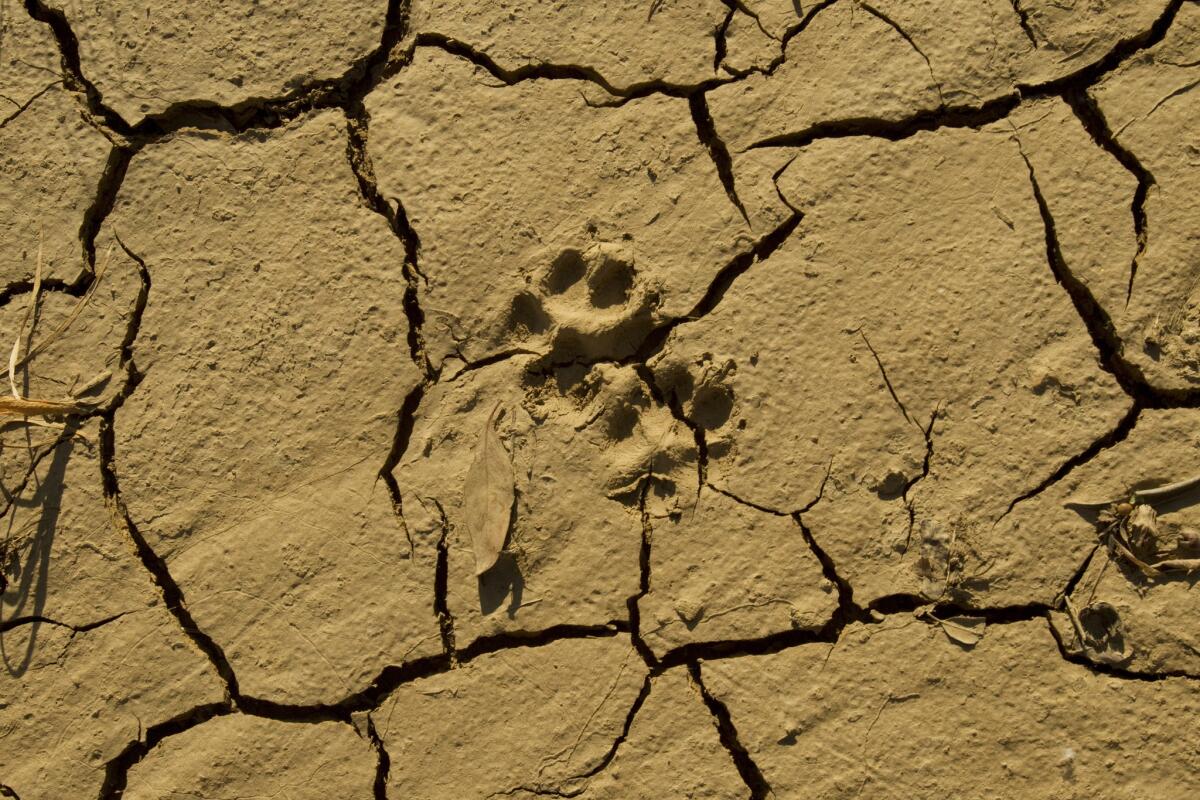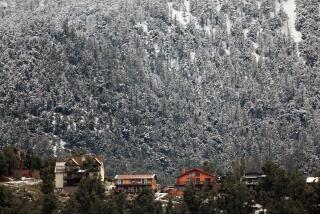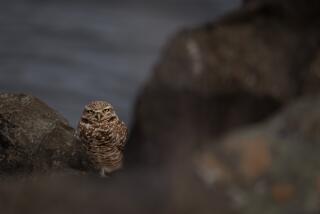Orphaned baby squirrels just one wildlife casualty of drought

Starving baby squirrels in parts of Northern California are so hungry that they are jumping out of their nests to search for food and getting lost on the way home.
The boom in suddenly motherless squirrels is just one example of how a drought going on more than three years has affected wildlife, experts say.
This year, the Gold Country Wildlife Rescue in Loomis has been swamped with orphaned baby squirrels. The nonprofit volunteer organization saw a 120% increase in the number of baby squirrels it took in, from 1,800 in 2013 to more than 2,200 this year, organization spokeswoman Jackie Nott said.
“If the drought continues, we expect next year to be much worse as the insidious affects of loss of food sources, more concentrated populations increasing competition, higher mortality, and a loss of ‘recruitment,’ meaning less babies make it through to adulthood,” she said.
But baby squirrels are just one of many animals risking their lives and fleeing their homes to search for food sources, which are diminished by drought.
California Department of Fish and Wildlife officials on Monday said drought has forced more bears and deer to venture into mountain highways, causing many to be struck and killed by vehicles.
Just in the last week, Malcolm Dougherty, director of the California Department of Transportation, said there were an “unprecedented” 23 collisions between wildlife and drivers on Highway 50 and Interstate 80 in Northern California.
Mating season and recent wildfires, which have destroyed a significant amount of vegetation, have also forced wildlife to travel farther than usual for food.
According to the California Roadkill Observation System, more deer were killed in 2014 than last year. Drought was likely to blame for the increase in deaths among deer, which were forced to travel farther in search of food, said Fraser Shilling, co-director of the Road Ecology Center.
Still, officials say there is no easy solution for diverting wildlife away from busy highways.
“You can’t really change wildlife behavior,” Fish and Wildlife spokeswoman Dana Michaels said. “We have to hope people are more intelligent than the animals.”
To reduce the number of animal-involved highway collisions, wildlife and transportation officials are reminding drivers to watch out for wildlife on the roads.
Caltrans is alerting drivers to look for wildlife through electronic messaging and signs posted along the highway system.
Wildlife officials said animals will continue to move closer to urban areas as long as the drought continues.
“If the drought persists there will be catastrophic consequences for all kinds of species-- especially those dependent on water, like amphibians,” Nott said. “It is very likely there will be pockets of local extinction for these animals.”
For breaking news throughout California, follow @VeronicaRochaLA.
More to Read
Start your day right
Sign up for Essential California for news, features and recommendations from the L.A. Times and beyond in your inbox six days a week.
You may occasionally receive promotional content from the Los Angeles Times.






